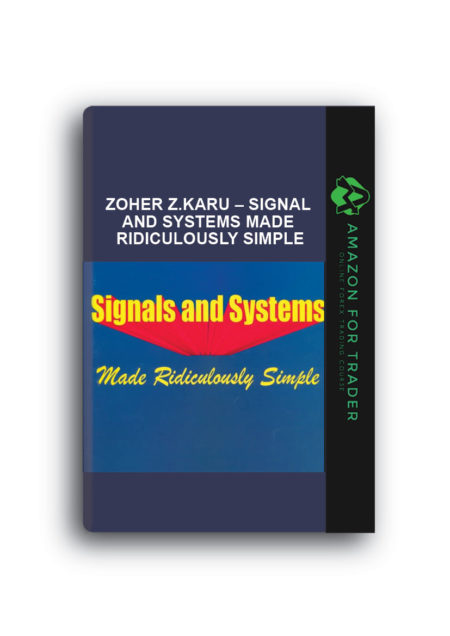Description
Barclay T.Leib – George Lindays. 3 Peaks and the Domed House Revised
In 1968, George Lindsay, a master technical analyst, published an article in which he outlined a repetitive chart pattern that he had specifically found at the end of long sustained bull markets. He called his pattern “Three Peaks and a Domed House,” and used it to predict a peak in the DJIA for October 31, 1968 or a little later. In point of fact, the Dow actually peaked at 994.7 in late 1968, before beginning a somewhat merciless bear market shortly thereafter that would be the most severe since World War II.
The topping formation that Lindsay claims to have discovered is pictured below in a 23 step idealized advance to a significant high. Bear with us while we briefly describe its stand-alone structure.
Lindsay characterized the “three peaks” process as one of rapid advances in brief spurts between which the market goes through long stretches of consolidation. The tops are typically somewhat “rounded or flat,” and the tops usually occur within a similar price range perhaps with a slight upward bias. According to Lindsay, the entire “three peaks” process typically lasted eight months.
After the third peak (at point 7), a rather severe downtrend begins. It is called the “Separating Decline” because it separates the “Three Peaks” from the formation that follows. This decline usually encompasses at least two selling waves, labeled from point 7 to point 8, and point 9 to point 10. The decline eventually achieved at point 10 is always at a lower level than either point 4 or point 6, and usually lower than both. Unless at least one of these lows is broken, one cannot label this formation as a “Separating Decline.”
A new advance and overall formation begins after point 10. It is the beginning of Lindsay’s “Domed House.” After a sharp reverse from the point 10 low, first there is a small requisite double test of that low. This transpires during the period labeled points 12 and 14 (which in traditional Elliott wave analysis terms would typically be labeled Wave ii of 5). After point 14, the market shoots higher into point 15. Lindsay labeled this advance the “Wall of the First Story.” Elliott would undoubtedly have called it a wave iii of 5. The “Roof of the First Story” follows, and typically takes the form of a flat or expanding zigzag with at least 5 reversals (down into point 16, up to 17, down to 18, up to 19, and down to 20). After the fifth reversal is achieved at point 20, the main uptrend is resumed into what Lindsay referred to as the “Wall of the Second Story.” In Elliott terms, the diagonal triangle would of course be labeled a iv of 5 wave, and the “Wall of the Second Story” would be the beginning of the final v of 5 advance.
The advance that begins at point 20 has one major hesitation at point 21, a potentially sharp decline into point 22, and then a final rush up to point 23 before quickly falling back to point 24, retracing practically the whole move from point 22 to 23. Prices hold up and typically rally a little until point 25, leaving an imaginary line that could be drawn through points 21 and 23 that marks the edge of the “Roof to the Second Story.” Falling back from point 25 and penetrating this line leaves an overall formation that suggests a cupola or small dome on top of a building, and thus the reference to a “Domed House.” In traditional technical analysis, one might often hear this referred to instead as a Head and Shoulders top.
A significant and lasting decline then commences immediately thereafter.
Lindsay spotted this idealized formation on several different occasions in the chart of the DJIA between 1906 and the early 1960’s, some with small variations to the idealized pattern, but none with more significance than the point 23 high made on September 3, 1929. On a slightly more broad-brush basis, the “Three Peaks” and “Domed House” of that time period are pictured below.
All of this leads us of course, to see whether Lindsay’s labeling might have any significance to the current DJIA that as this is typed has obtained a close of 11,722. Although one must be careful not to underestimate the magnitude of move that the “Domed House” formation may bring (a la 1929 which was approximately a 30% advance from the point 10 low), we find the labeling below of potential interest.
In the chart above, we see a “Three Peaks” formation that from point 2 to point 9 spent six months in its overall construction, a bit short of Lindsay’s eight months idealized pattern. We see a “Separating Decline” that has “at least two-waves” (in this case it looks like three) that breaks both the point 4 and point 6 lows. We see a period after the October lows, where there is a double test of that low before prices move steadily higher into point 15. Although this Nov-Dec advance was not quite a unidirectional “wall” (for that perhaps the NASDAQ would qualify better), point 15 did come where Lindsay would have envisioned it, just short of the high made back by the last of the “Three Peaks.” A choppy sideways period in 5 waves also then transpired – the “Roof of the First Floor” so to speak.
If our labeling is correct, then point 20 may be the final part of this period of zigzag consolidation that was reached during the first week of January 2000. An advance that may be labeled the “Wall of the Second Story” then took us up to point 21, before we sagged into a shallow point 22. With the DJIA having vaulted to a 11,722 close this past Friday, this would leave us now somewhere close to forming the ever-significant cupola of the “Second Story Roof” that will mark point 23.
The comparison to Lindsay’s idealized pattern is by no means a perfect one. But the similarities between them also should not be ignored. Should we now trade down into a point 24, and then up to a lower high point 25, the structure of a completed Dome would become more self-evident, and the risk of a completed advance will also increase. A point 24 low below the point 22 low would be a particularly dangerous development.
It is truly too early to definitively mark the current DJIA price pattern as a classic Lindsay formation, but there is no way to eliminate it as a valid interpretation. Even a further marginal advance by the DJIA would not change the existence of those three prior peaks, nor all the intervening similarities of structure.
All that we may truly need is a bit more patience while the market puts the final touches on the form that its second story roof will take. All the toil, struggle, and energy that this market has used on its advance from point 10 to point 23 should then be eclipsed in a reasonably quick fashion once point 25 is in place.
AN IMPORTANT DISCLOSURE
Sand Spring Advisors provides information and analysis from sources and using methods it believes reliable, but cannot accept responsibility for any trading losses that may be incurred as a result of our analysis. Our advice should be deemed our personal opinion and not a recommendation to invest. Individuals should consult with their broker and personal financial advisors before engaging in any trading activities, and should always trade at a position size level well within their financial condition. Principals of Sand Spring Advisors may carry positions in securities or futures discussed, but as a matter of policy we will always so disclose this fact if it is indeed the case. We will also specifically not trade in any described security or futures for a period 5 business days prior to or subsequent to a commentary being released on a given security or futures contract. The principal of Sand Spring Advisors LLC, Barclay T. Leib, currently owns mutual fund and option positions that will benefit from an equity market decline.
Barclay T.Leib, George Lindays. 3 Peaks and the Domed House Revised, Download George Lindays. 3 Peaks and the Domed House Revised, Free George Lindays. 3 Peaks and the Domed House Revised, George Lindays. 3 Peaks and the Domed House Revised Torrent, George Lindays. 3 Peaks and the Domed House Revised Review, George Lindays. 3 Peaks and the Domed House Revised Groupbuy.


 Price Action Trading Vol.2 - Fractalflow
Price Action Trading Vol.2 - Fractalflow VALUE INVESTOR PROGRAM (2024 UPDATED) - Education.rask.com
VALUE INVESTOR PROGRAM (2024 UPDATED) - Education.rask.com Pillars of Options Trading Class - Simpler Trading
Pillars of Options Trading Class - Simpler Trading Wallstreet Trappin
Wallstreet Trappin ACTIVEDAYTRADER – BOND TRADING BOOTCAMP
ACTIVEDAYTRADER – BOND TRADING BOOTCAMP Making Sense of Price Action: Price Action Profits – Info Product Lab
Making Sense of Price Action: Price Action Profits – Info Product Lab Options Volatility Trading: Concepts and Strategies - Quantra
Options Volatility Trading: Concepts and Strategies - Quantra Full Course Bundle - Options Insight
Full Course Bundle - Options Insight Bruce Babcock - The 80% Solution S&P Systems
Bruce Babcock - The 80% Solution S&P Systems Max Out Your Trade - October 2021 - Chandler Horton
Max Out Your Trade - October 2021 - Chandler Horton Gary Dayton – Trade Tops & Bottoms
Gary Dayton – Trade Tops & Bottoms GEOMETRIC TRADER LEVEL 1
GEOMETRIC TRADER LEVEL 1 Futures Day Trading - TRADEPRO Academy
Futures Day Trading - TRADEPRO Academy Oil & Gas Modeling - Wall Street Prep
Oil & Gas Modeling - Wall Street Prep Sam Shames’ Ultimate Indicator Bundle 2022 - Sam Shames
Sam Shames’ Ultimate Indicator Bundle 2022 - Sam Shames The Funded Trader System - Simplertrading
The Funded Trader System - Simplertrading Stage Analysis Masterclass - Trader Lion
Stage Analysis Masterclass - Trader Lion Trading Double Calendar in 2018 - Sheridan Options Mentoring
Trading Double Calendar in 2018 - Sheridan Options Mentoring Trading Double Diagonals in 2019 - Sheridan Mentoring
Trading Double Diagonals in 2019 - Sheridan Mentoring






Reviews
There are no reviews yet.